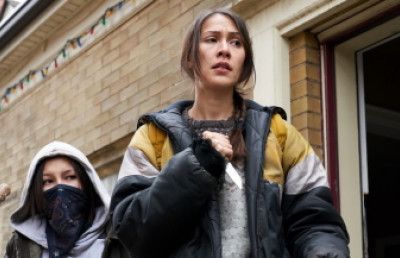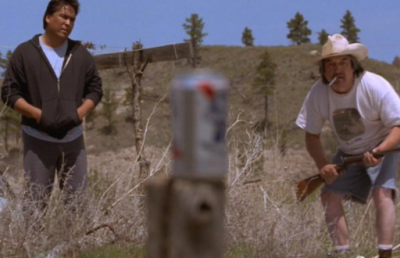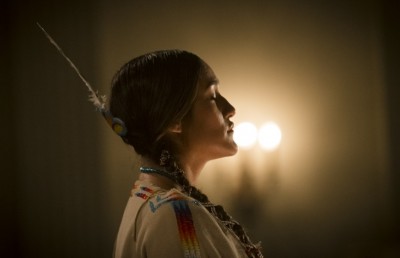Representation of The Stolen Generation in Select Australian Feature Films
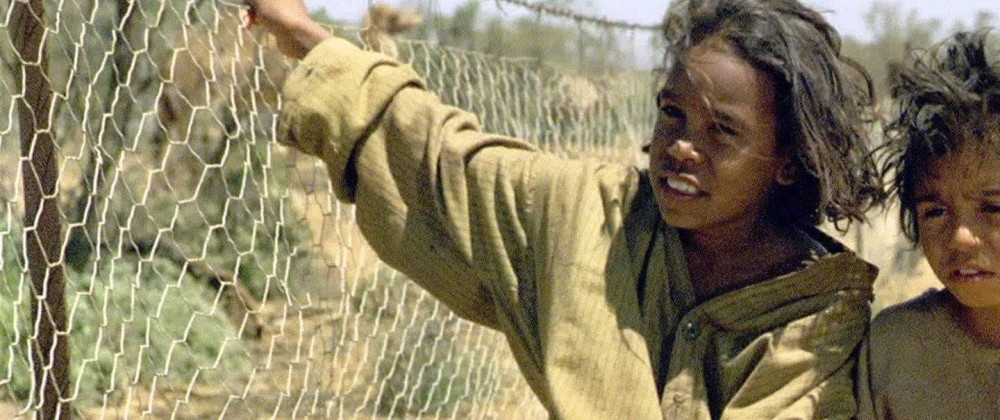
The oral, visual, textual and performative renditions of art forms are the manifestations of the culture, belief system and tradition of a generation of a geographical area. Among the multifarious cultural forms, films have been instrumental in entertaining and instructing the masses. This influential medium refracts the socio-cultural, political, religious, ethical contexts of the society. The mainstream film has always forgotten to represent the invisible subjects of the communities like Māori of New Zealand, Red Indians of America, Dalits of India, Metis of Canada, First Nations of Australia. White supremacy has disregarded the ethnic groups who occupy the margins thereby preferring the narratives of the dominant class.
Though Australian cinema shares almost the same history as the beginning of cinema, the visual cinematic language has least explored the lives of the original inhabitants of the land. Traces about Aboriginal life were acquired from the films shot during the initial years of the 1900s by anthropologists F.J Gillen and Baldwin Spencer for their ethnographic study. Australia being a settler colony, European settlers viewed the indigenous as primitives “who ranged over the land than inhabiting it” (Collins and Davis 4). The colonizers established and maintained political, social, historical and institutional domination. The Eurocentric notions led to a racist and offensive representation of minorities in popular culture. The white male-centric voices of the first half of the twentieth century considered the aboriginals as uncivilized therefore they are being succumbed to the stereotypical roles of domestic help, alcoholics, murderers and criminals. As Eve Fesi points out:
White Australia has used race defamation to justify a range of attacks on and disruptive policies towards Aboriginal people. Race defamation includes derogatory stereotypes and abusive and contemptuous language, based on the ideology that the Aboriginal race, like other black races, is intellectually and culturally deficient, innately inferior to the dynamic and sophisticated Caucasian race peoples, but having the possibility of being “civilized”, “Christianised” or “trained” (263).
Institutionalized racism is a dark chapter in Australian colonial history which aimed at Social Darwinism, eliminating the Aboriginal population over a period of time. The idea was similar to the genocide in Germany. For this purpose, children of the indigenous group and mixed-race were taken or abducted by the White Australians as a part of governmental policy. Ten to thirty-three percentages of the children were abducted from their families. The dehumanization process which started in the last quarter of the nineteenth century continued till the 1970s. The state exercised guardianship for the children who were either taken to Christian mission orphanages or white families. The separated half-caste children are referred to as Stolen Generation. The children were forced to assimilate to the dominant white culture and denied the freedom to articulate their Aboriginal languages. Even their names were changed in the new place. Such attempts of the white government were to establish the notion that their culture stands superior to the indigenous civilization. The act of white imperialism has ruined the lives of the stolen generation leading them to pitiable conditions. Robert Manne opines that “No episode in country’s history is more ideologically sensitive than the story of what is now called the stolen generation” (washingtonpost.com). This sensitive issue has been left unaddressed for centuries. The last decade of the twentieth century has witnessed changes in the perspectives of the Australians towards the First Nations. Mabo decision, Bringing Them Home Report of the 1990s were initial moves by the government in recognizing the horrors inflicted by colonialism. There has been a considerable alteration in the mindset of the Australians with the government’s step to acknowledge and apologize for the cruelty inflicted upon the First Nations. Simultaneously, the creative voices started to include and reframe the Aboriginal identity in popular cinema. A handful of cinemas started to allude to the stories of aboriginals and the issues of the stolen generation. The changing sensibilities of Australia towards the First Nations can be witnessed in films. Though the beginning of the aboriginal films can be traced back to the 1950s, there has been a radical change in the approach towards the creation of aboriginal characters after the 1970s.
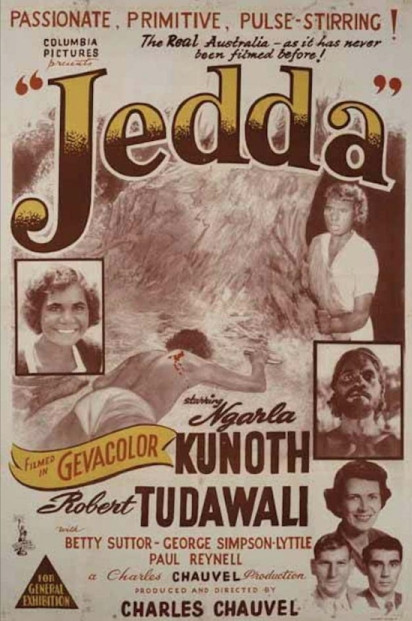
Charles Chauvel’s Jedda (1955) is the first film featuring the lives of the aboriginals whose roles are played by Indigenous actors. The film centers on the eponymous heroine Jedda who was adopted by a white couple Sarah McMann and Douglas McMann after the death of her aboriginal mother at childbirth. Sarah nurtures Jedda in European style and avoids her contact with Aboriginals. Sarah firmly believes that it is her primary responsibility to bring Jedda closer to whites’ way of living. Sarah’s character justifies violent colonialism and forced assimilation which was part of the government propaganda during the 1950s in Australia. Nevertheless, Jedda becomes curious to know about her aboriginal ancestry and attempts to reconnect with the bygone relations, race, culture through other Aboriginal people in the neighbourhood. Marbuck, an aboriginal man whom she feels attracted, lures her to his camp with a song and later abducts her to his tribe land. But he is punished for bringing Jedda, who does not share their skin colour. As a punishment, they sing Marbuck’s death song. The funeral song makes him insane. In disgrace and insult, he takes Jedda to a cliff and ends their life. The film tries to perpetuate and justify the ideas of marginalization and victimization, by presenting Marbuck as a negative stereotype. He is depicted as a molester who is punished for his moral weakness. His suicide is glorified as the penalty of the sin that he committed. The government propaganda of assimilation policy is reflected in the film, presenting Sarah as the embodiment of the assimilationist attitude of the time. The narrative overtly addresses the issues of systematic oppression, exploitation and forced assimilation to European culture. The ideologies of white consciousness are embedded into the narrative, thereby side kicking the less privileged. Theodore F Sheckels observes that removal of the filtering white consciousness will be possible only when Aboriginals become artists, not just subjects (174).
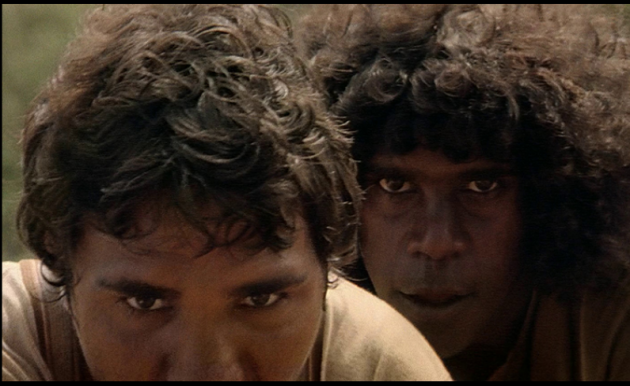
The Chant of Jimmy Blacksmith
Fred Schepisi’s The Chant of Jimmie Black Smith (1978) is controversial for visually representing resistance against the white men’s exploitation and oppression. The narrative is based on the real-life story of an Aboriginal bushranger Jimmy Governor. The film is an adaptation of a 1972 Booker prize-nominated novel by Thomas Keneally of the same title. Jimmie Blacksmith is a half-caste who was raised by a white missionary couple, Reverend Neville and Martha. Though he was brought up in a white family, no one accepted him to be a part of white culture. He was restrained from mixing up with the aborigines who were considered morally and culturally inferior. Set in 19th century South Wales, Blacksmith moves to the city in search of a job. Even though he was educated, he gets only menial jobs. He becomes a victim of varying degrees of humiliation and oppression from his masters. In a police station, Blacksmith witnesses the strangling of an aboriginal for wrongly accusing him of killing a white man. Subjugation, mistreatment, underpayment and suppression continued to haunt him throughout his life. He falls victim to racial abuse even in his marriage to a white woman. To spare her honour he marries a serving girl who was pregnant with a white man’s child. After the birth of the child, everyone denounces and shunts him away from the estate. Society does not accept him when he tries to assimilate to both the Aboriginal culture and the white culture. Humiliation, pain and suffering turns into anger when his employer’s family take back his groceries and wages. In the suppressed wrath, Blacksmith commits a series of heinous crimes. The account of the violence he committed can be perceived as an act of resistance and liberation from the abominable oppression that his ancestors encountered from time immemorial. Blacksmith repeats “I’ve declared war, that’s what I’ve done.” The war is against the mental and physical torture inflicted upon the half-caste.
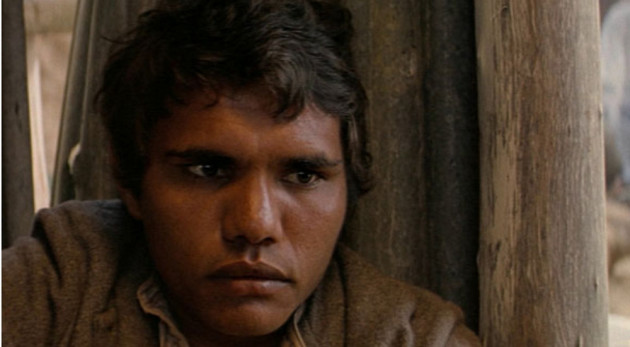
The Chant of Jimmy Blacksmith
More than an event in the history of colonization, people understood or became aware of the horrendous history of the stolen generation through the film Rabbit-Proof Fence. Rabbit-Proof Fence (2002) is based on a book titled Follow Rabbit-Proof Fence (1996) by Doris Pilkington Garimara. The story is based on the real-life of the author’s mother Molly Craig, her sister Daisy Kadibill and their cousin Gracie Fields. The three half-caste girls were forcibly taken by Constable Riggs to Moore River Native Settlement in 1931 as a part of the Child Removal Policy. The girls escape from the settlement and travel to Jiblong, their homeland. The fourteen-year-old Molly was smart enough to follow the long stretches of rabbit proof fence to escape and save them from the tracker, Moodoo. Amidst the journey, Gracie was recaptured and sent back to the settlement. Surviving the odds, others walk 1500 miles in three months to rejoin their family. The issues of segregation and discrimination continue to pester the half-castes throughout their lives. At the end of the movie, Molly along with her two daughters were caught by the Europeans, but for the second time, she escapes with her younger daughter Annabelle. Nine years later Annabelle was recaptured and never saw her mother again. Philip Noyce’s iconic film “offers a powerful image of Aboriginal survival of colonial violence and subjugation. In doing so, it inverts two centuries of the representation of Aboriginal people as a doomed or dying race, a group of people who have no place in modernity” (Collins and Davis 143).
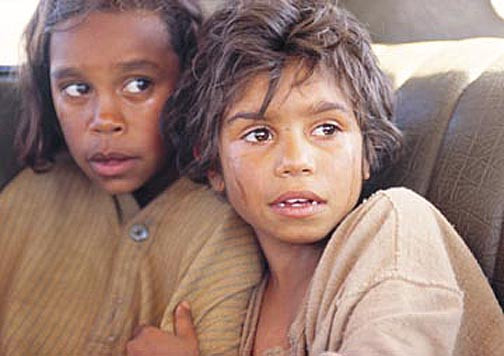
Rabbit Proof Fence
Richard Perkins’ movie Radiance (1998) implicitly discusses the issue of the stolen generation. It is a story about three sisters Cressy, Nona and Mae who meet together in Queensland after the death of their mother. Cressy, an opera singer and Nona rejoins their sister Mae who took care of their mother till her death. They have never met together in their lifetime. Through the conversations, they dig up their resentful past. They share violent stories of dispossession and displacement of their childhood. Mae and Cressey were stripped from their mother when they were young, sent to an institution in Brisbane which was run by white settlers. They also discovered that their mother could save only Nona when the authorities came to abduct her. They realize the painful truth that their fathers are different and they are of mixed descent. Nona recollects the incident of being brutally raped by one of her mother’s boyfriends. Harry, mother’s former boyfriend demands his beachfront cottage which he had given as a gift. Now their island is owned by the Japanese Corporation for a resort. The girls want to spread the ashes of their mother on the island to reclaim their ancestral land and heritage. The girls decide to burn down the cottage to mark their dissent and fury against them. Theodore F. Sheckels opines that:
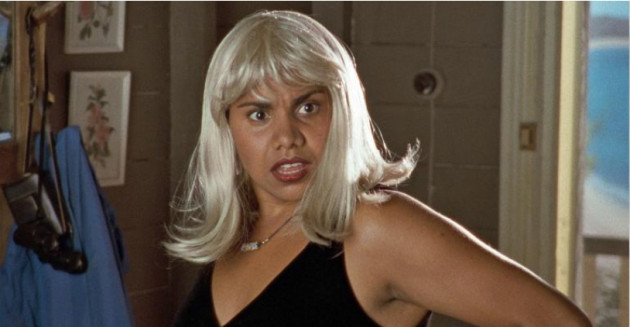
Radiance
The film focuses on the relationships among the three women and its trajectory is toward the purging of their mutual resentments, making them truly “sisters” again, these interpersonal feelings are not the only ones purged in the fire Mae and Cressy set to burn the cottage down. Also purged is the evil associated with the dwelling: the sexual abuse of Aboriginal women by white men and the kidnapping of the resulting mixed-descent children. (179)
In all these films the characters are relegated to a space that is unnatural to their existence. Consequently, they fail to assimilate to the place where they were replanted. Experiencing the cultural divide, the characters become more hostile and seek reconnection with their homeland. But their white foster parents forbid them from intermingling with aboriginal ancestry. In the constant negotiations with identity, the characters occupy a state of in-betweenness. Apart from the mental trauma of physical separation, the violation of the body torments the life of the individuals. In Jedda, the characters become the victims of social rejection and forcibly commit suicide, whereas in The Chant of Blacksmith the protagonist’s long-suppressed silence turns into violence. The indomitable spirit and assertion to live in their homeland led the journey of the girls in Rabbit-Proof Fence. In the film Radiance, the sisters proclaim a space of their own in the world by burning down the cottage possessed by the colonial powers. As a mark of their anguish, they also decide to spread their mother’s ashes on the beach. Jedda justifies the victimization of the blacks whereas the other films mark their resistance and resilience against the colonial powers.
The films have demystified and amplified the suppressed and silenced voices of the stolen generation, thereby altering the racial prejudices. “Films featuring Aboriginal characters tended to revive an Anglo-centric version of the social imaginary at a moment when the economy and popular culture were moving decisively into a post-national, cosmopolitan mode” (Collins and Davis 8). Beneath Clouds (2002), Australian Rules (2002), The Tracker (2002), Ten Canoes (2006), Samson and Delilah (2009), Mad Bastards (2010), The Sapphires (2012), and Charlie’s Country (2013) are the evidence for the era of social change. The indigenous films are now been liberated from the clutches of white-centric discourses with the coming of indigenous directors like Brian Syron, Wayne Blair, Warwick Thornton, Adrian Willis, Tracey Muffatt and Rachel Perkins. In popular culture, the Aboriginal characters have been accepted worldwide which ameliorates their liberated voices and visibility in the new milieu. Over the years Aboriginal films have become an integral part of mainstream cinema with their narratives and continue to reflect the indigenous experiences. The Aboriginal films have become stable enough to take up the challenges of the 21st century.
Works Cited
Collins, Felicity and Therese Davis. “Backtracking after Mabo.” Australian Cinema after Mabo, Cambridge University Press, 2004, p.4, 8, 143.
Hickling Hudson, Anne. “White Construction of Black Identity in Australian Films about Aborigines.” Literature Film Quarterly, Salisbury, Vol. 18, Iss. 4, 1990, p.263
Manne, Robert. “A Long Trek to the Truth.” The Washington Post, February 2, 2003, washingtonpost.com/archive/opinions/2003/02/02/a-long-trek-to-the-truth/e95d996c-91a6-44a9-85b5-7341e3fad3cc)/.
Sheckels F. Theodore. “The Stolen Generation in Feature Film: The Approach of Aboriginal Director Rachel Perkins and Others.” A Companion to Australian Aboriginal Literature, edited by Belinda Wheeler, Camden House, 2015, p.174,179.



